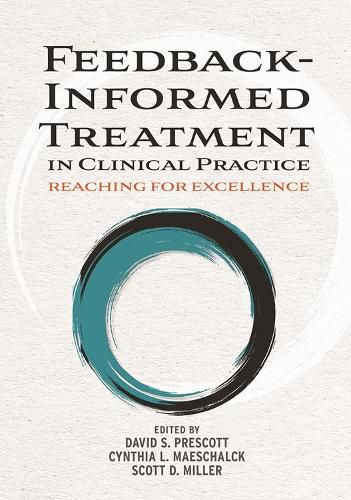Readings Newsletter
Become a Readings Member to make your shopping experience even easier.
Sign in or sign up for free!
You’re not far away from qualifying for FREE standard shipping within Australia
You’ve qualified for FREE standard shipping within Australia
The cart is loading…






Through feedback-informed treatment (FIT), clinicians gather real-time input from clients through structured yet flexible measures that identify what is and is not working in therapy and how to better meet clients’ needs.
This book coalesces expert insights from practitioners who have successfully integrated FIT in their own work. Their experiences demonstrate how other clinicians can incorporate FIT into their own practices to consistently monitor clients’ progress and the therapeutic alliance.
The book first reviews FIT theory, specific measures (including the Outcome Rating Scale and the Session Rating Scale), and general strategies for implementing FIT in practice and supervision. This information is then translated into more specific applications of FIT with different kinds of clients, including individuals, couples, children and families, LGBTQ clients, and clients suffering from addiction and early onset psychotic disorders. A variety of treatment settings are also represented, such as private practice, clinics, group therapy, the criminal justice system, and pharmacies.
The concluding chapter ties together the book’s overarching themes with friendly, practical advice about using FIT to bolster professional development and improve one’s clinical abilities.
$9.00 standard shipping within Australia
FREE standard shipping within Australia for orders over $100.00
Express & International shipping calculated at checkout
Through feedback-informed treatment (FIT), clinicians gather real-time input from clients through structured yet flexible measures that identify what is and is not working in therapy and how to better meet clients’ needs.
This book coalesces expert insights from practitioners who have successfully integrated FIT in their own work. Their experiences demonstrate how other clinicians can incorporate FIT into their own practices to consistently monitor clients’ progress and the therapeutic alliance.
The book first reviews FIT theory, specific measures (including the Outcome Rating Scale and the Session Rating Scale), and general strategies for implementing FIT in practice and supervision. This information is then translated into more specific applications of FIT with different kinds of clients, including individuals, couples, children and families, LGBTQ clients, and clients suffering from addiction and early onset psychotic disorders. A variety of treatment settings are also represented, such as private practice, clinics, group therapy, the criminal justice system, and pharmacies.
The concluding chapter ties together the book’s overarching themes with friendly, practical advice about using FIT to bolster professional development and improve one’s clinical abilities.